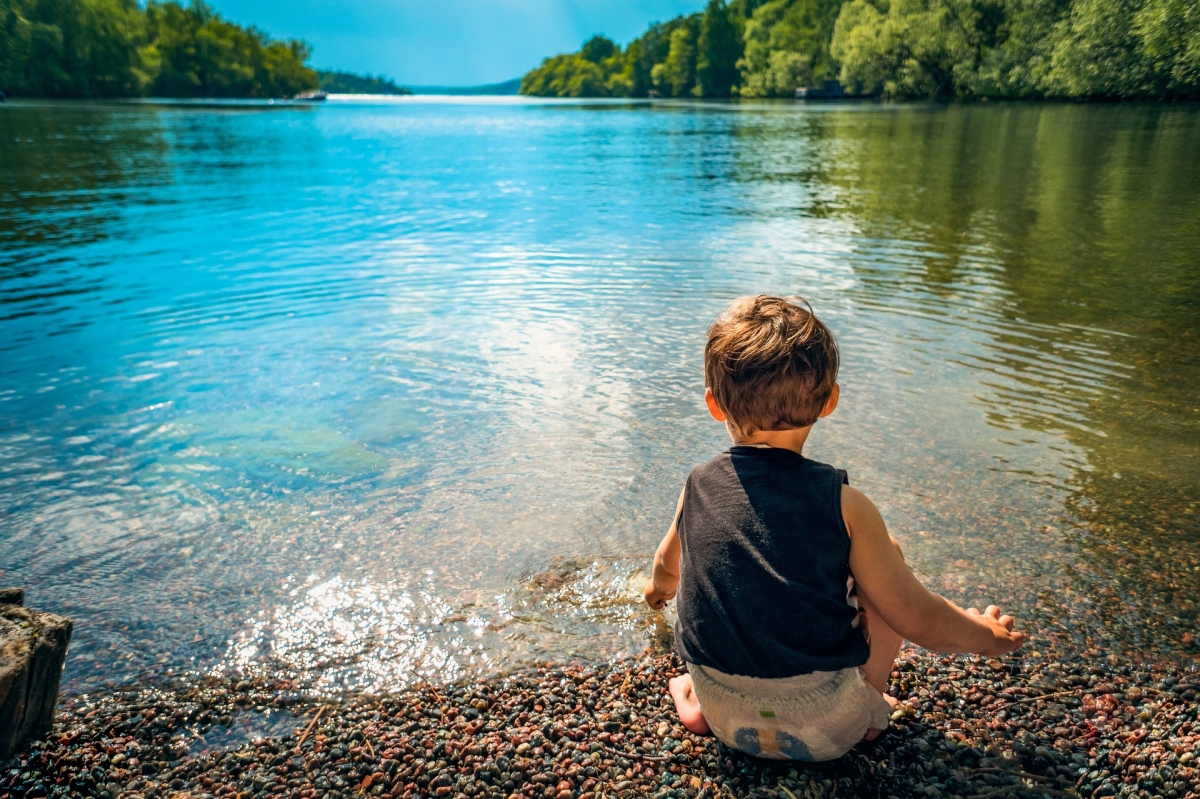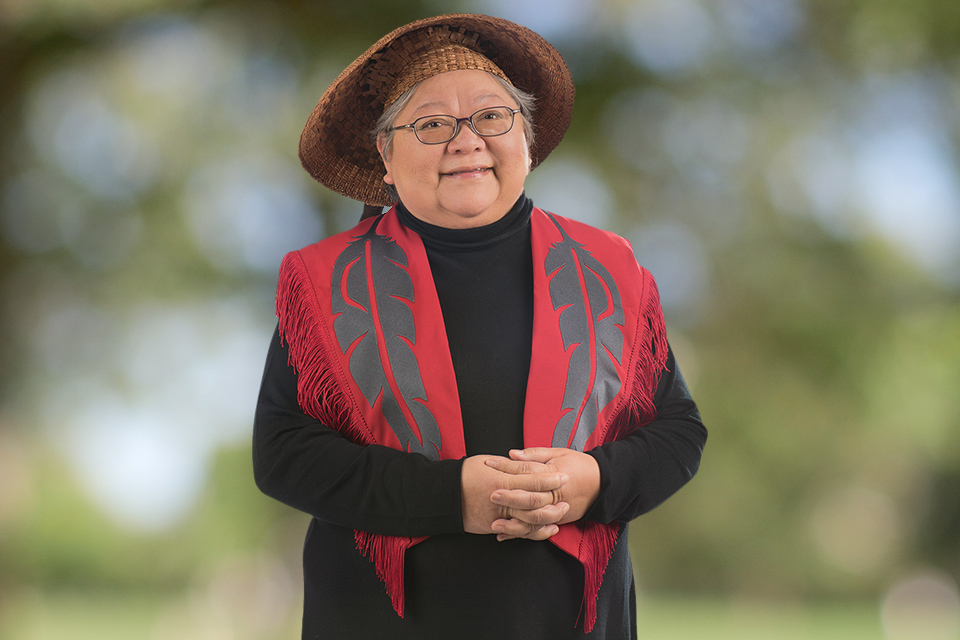 In our busy, modern lives, it can be rare to find ourselves in stillness apart from a glowing blue screen, moving vehicle, or agonizingly slow line-up. Yet, the deeper benefits of stillness–the ones that calm and replenish our bodies, minds, and hearts–require us to set these distractions aside, if only for a little while.
In our busy, modern lives, it can be rare to find ourselves in stillness apart from a glowing blue screen, moving vehicle, or agonizingly slow line-up. Yet, the deeper benefits of stillness–the ones that calm and replenish our bodies, minds, and hearts–require us to set these distractions aside, if only for a little while.
Intentional stillness–yes, we mean being still on purpose, for a purpose–is a practice that Lil'wat scholar Lorna Williams knows well. A Professor Emerita of Indigenous education (Curriculum and Instruction) at the University of Victoria, Williams teaches stillness through the Lil'wat principle Kat'il'a.
Kat'il'a means:
"finding stillness and quietness amidst our busyness and quest for knowledge. Within the increasing demands and speed in our lives, we need to seek out spaces that allow for changed pace, contemplating deeply our experiences and the wisdom of others" - Sanford, Williams, Hopper & McGregor, "Indigenous Principles Decolonizing Teacher Education: What We Have Learned"

According to Williams, practicing Kat'il'a allows both teachers and learners to "breathe deeply, to connect to the world around [us], and to regain a sense of balance." This definition reflects how recent scientific research defines the concept of rest: a pathway to calm, inner tranquillity and mental health; a base of support; and stillness. This research also reports that the positive effects of rest include: health, mental clarity and healing.
So, how do we make time for stillness, rest, Kat'il'a, when it may already feel like we don't have enough hours in the day to teach, to learn, and to care for ourselves and others?
Fortunately, structured moments of rest can yield profound benefits.
3 Ways to Make Stillness Matter:
- Make stillness a routine part of your and your children's day by carving out a regular time to rest. A good way to do this is to link it to another part of your daily routine that happens regularly and naturally, such as before or after a meal, after returning home from work or school, or before bed.
- Practice mindfulness[1]. Guide yourself and your child to focus on a particular sensation through sight, sound, or touch. Take turns naming all the sounds you can hear with your eyes closed. Blow bubbles and follow each one with your eyes until it pops. Gently toss a stone in a puddle, pond, or lake and watch the ripples fan out in your peripheral vision while keeping your eyes softly focused on the center. Lay back on the grass and actually watch the clouds float by with your child–some slow, some fast, and each at its own perfect pace. Place a piece of chocolate on your tongue and notice how the sensation in your mouth changes as it melts and transforms in flavour and texture.
- Find stillness in movement. Get outside for a walk in nature. Lace up your runners and get moving - but leave the tunes at home. Ride your bike with your child to school. Take a yoga class, go for a swim, or get in the zone at the gym. The possibilities are endless, but the purpose should be clear: when we are moving for stillness, it is less an item on our to-do lists, and more of a way to step out of our busy lives and minds to be present with ourselves in the moment.
Excited about the amazing benefits of mindfulness but having trouble getting started? Check out this article on how to overcome common stumbling blocks by the Greater Good Science Center at the Unviersity of California, Berkeley.